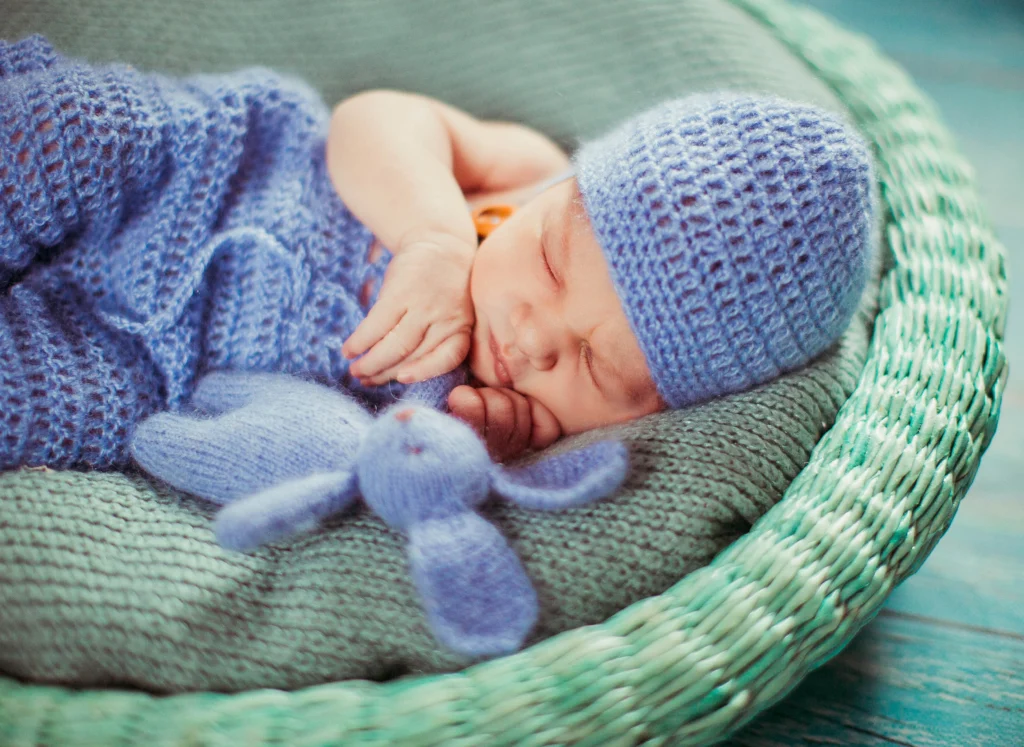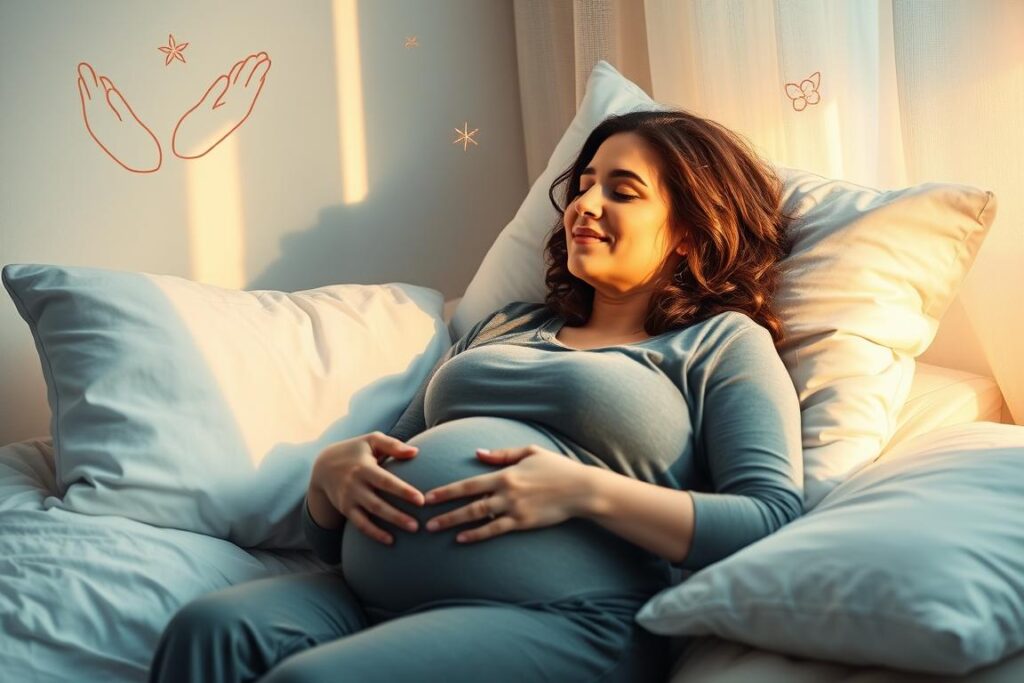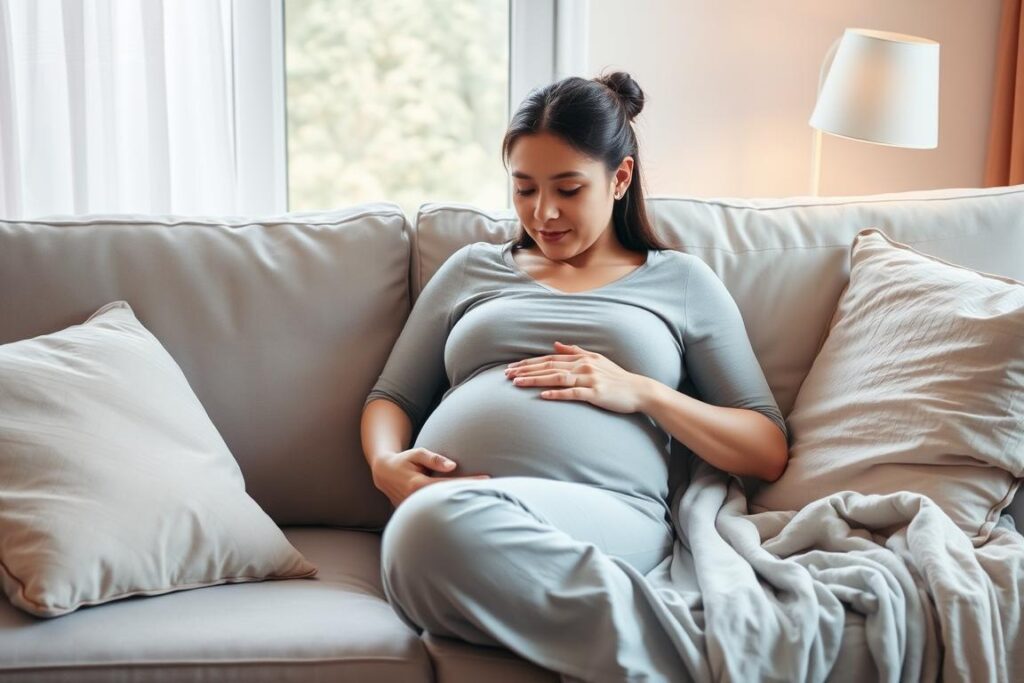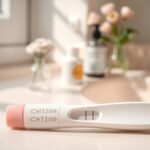If you’re expecting a baby in California, knowing your rights is key. This guide will cover Pregnancy Disability Leave (PDL) and its rules. It also talks about the Employment Development Department (EDD) and their role in helping you. Learning about PDL helps you get the support you need during this special time.
Key Takeaways
- Pregnancy Disability Leave (PDL) in California provides job protection and partial wage replacement for expectant mothers
- The EDD plays a central role in administering PDL benefits, including verifying eligibility and processing claims
- Understanding the legal definition, coverage, and eligibility requirements is crucial for accessing PDL benefits
- Qualifying medical conditions, required documentation, and healthcare provider certification are key considerations
- Navigating the claim filing process and understanding the benefits structure, including maximum amounts and payment schedules, is vital
What is Pregnancy Disability Leave in California?
In California, pregnancy disability leave (PDL) is a key law. It protects jobs and provides income for those who can’t work because of pregnancy. The California Employment Development Department (EDD) runs this program. It helps pregnant workers take care of their health without losing their jobs or money.
Legal Definition and Coverage
The California Pregnancy Disability Leave Law covers temporary disabilities from pregnancy, childbirth, or related health issues. This includes severe morning sickness, prenatal or postnatal care, and recovery from childbirth. Workers can get up to four months of job-protected leave during their pregnancy and after giving birth.
Key Eligibility Requirements
- Employed by a company with 5 or more employees
- Worked for the employer for at least 12 months
- Accrued at least 1,250 hours of service during the 12-month period prior to the start of leave
Duration of Benefits
Eligible employees can take up to four months of California PDL for pregnancy-related disabilities. They can take leave for the actual time they are disabled due to pregnancy, childbirth, or related medical conditions. The exact time depends on the employee’s healthcare provider and their medical needs.
| Benefit | Duration |
|---|---|
| Pregnancy Disability Leave (PDL) | Up to 4 months per pregnancy |
Pregnancy Disability Leave EDD Benefits Overview
In California, the Employment Development Department (EDD) supports expecting mothers with pregnancy disability leave (PDL) benefits. These benefits help women take time off work for their health during pregnancy and after giving birth.
The EDD’s pregnancy benefits are part of the state’s disability insurance. It offers money to those who can’t work because of a medical issue not related to work. For pregnant women, these EDD pregnancy benefits help with maternity leave payments. This way, they can focus on their health and their baby without worrying about money.
To get these state disability insurance benefits, you must meet certain requirements. You need to have worked and earned a certain amount of money before. You also need to provide a doctor’s note saying you can’t work because of pregnancy.
| Key Benefit Details | Description |
|---|---|
| Benefit Purpose | Provide wage replacement for eligible individuals unable to work due to a pregnancy-related medical condition |
| Eligibility Requirements |
|
| Benefit Duration | Up to 4 weeks before the expected delivery date and up to 6 weeks after the actual delivery date (or longer if there are complications) |
| Benefit Calculation | Based on the individual’s past earnings, with a maximum weekly payment amount set by the state |
Knowing about the maternity leave payments from the EDD’s pregnancy disability leave program helps expecting mothers in California. It prepares them for the financial and medical parts of their journey. This ensures a smooth and supported transition into parenthood.
Qualifying Conditions for PDL Benefits
To get Pregnancy Disability Leave (PDL) benefits in California, it’s key to know the qualifying medical conditions. The state’s labor laws list many pregnancy-related disabilities. These can make expectant mothers eligible for these vital benefits.
Medical Conditions Covered
The PDL program includes a broad range of PDL medical conditions. These can happen during pregnancy. Some examples are:
- Severe morning sickness
- Gestational diabetes
- Pregnancy-related high blood pressure
- Preeclampsia
- Postpartum depression
- Complications requiring bed rest
Required Documentation
To get PDL benefits, employees need to give their employer the right medical papers. This usually means a doctor’s note. It should confirm the pregnancy-related disability and how long the leave will last.
Healthcare Provider Certification
The doctor certification for leave is a key part of applying for PDL. Doctors must fill out specific forms. They need to detail the pregnancy-related disabilities and how long the leave will be. This certification is crucial for getting PDL benefits and making the leave process easier.
| Qualifying Condition | Typical Documentation Required |
|---|---|
| Severe morning sickness | Note from obstetrician or midwife |
| Gestational diabetes | Note from obstetrician or endocrinologist |
| Pregnancy-related high blood pressure | Note from obstetrician |
| Preeclampsia | Note from obstetrician |
| Postpartum depression | Note from obstetrician or mental health professional |
| Complications requiring bed rest | Note from obstetrician or midwife |
How to File Your EDD Claim for Pregnancy Leave
Filing for pregnancy disability leave through the EDD can seem hard. But, with the right info, you can make it smooth and successful. Being proactive and well-prepared is key.
First, collect all needed documents. This includes your doctor’s note about your pregnancy-related health issue and how long you’ll be out. You’ll also need personal info like your name, social security number, and how to reach you.
- Fill out the Claim for Disability Insurance (DI) Benefits form (DE 2501) on the EDD website.
- Make sure you qualify, like having earned at least $300 with SDI deductions during your base period.
- Send in your claim within 49 days of when your disability started to get your benefits on time.
- Decide how you want to send in your claim, online, by mail, or in person at an EDD office.
The EDD claim application for pregnancy leave filing and disability insurance claim takes time. So, plan ahead and keep up with any extra info or documents the EDD asks for. By following these steps, you can boost your chances of a successful and timely claim.
“The key to a successful EDD claim for pregnancy leave is being proactive and well-prepared.”
Maximum Benefit Amounts and Weekly Payments
When it comes to PDL benefit calculation, the maximum weekly benefit is based on your earnings before you got sick. California’s Pregnancy Disability Leave (PDL) program helps those on pregnancy leave. It’s run by the Employment Development Department (EDD).
Calculating Your Benefits
The PDL benefit calculation uses your average weekly wage. As of 2023, the max weekly benefit is $1,300. The EDD looks at your earnings from the last quarter to figure out your weekly PDL payment. This payment is usually 60-70% of your average weekly wage.
Payment Schedule and Duration
Your maternity leave pay comes out regularly, like every two weeks or weekly. How long you get benefits depends on how long you’re out due to pregnancy, up to four months (17 1/3 weeks).
Tax Implications
Remember, your pregnancy disability insurance tax might change with PDL benefits. These payments are seen as taxable income. So, you’ll need to include them when you file your taxes.
| Benefit Calculation Factors | Details |
|---|---|
| Maximum Weekly Benefit | $1,300 (as of 2023) |
| Benefit Percentage | 60-70% of average weekly wage |
| Maximum Benefit Duration | Up to 17 1/3 weeks per pregnancy |
| Taxability | PDL benefits are generally considered taxable income |
“Understanding the PDL benefit calculation and maternity leave pay details is crucial for expectant parents to plan their finances during this important time.”
Rights and Protections Under PDL
Pregnancy Disability Leave (PDL) in California offers vital job protections for pregnant workers. It ensures they can take time off for medical needs without fear of pregnancy discrimination or losing their job protection during leave.
Eligible employees get up to four months of job-protected leave under PDL. Your employer can’t fire you or refuse to bring you back to your job when you return. They must also keep your employee rights, like health benefits, during your leave.
- PDL stops employers from discriminating against you because of pregnancy, childbirth, or related health issues.
- Your employer must offer reasonable work changes or a less demanding job if your doctor suggests it.
- You can take PDL in bits or work fewer hours if your health needs it.
PDL works with other leave laws like FMLA and CFRA. Knowing how these laws interact can help you get the most out of your job protection during leave and benefits.
| Key PDL Rights and Protections | Description |
|---|---|
| Job Protection | Employers must reinstate you to the same or a comparable position upon your return from PDL. |
| Health Benefits | Employers must continue to provide your health benefits during your PDL leave. |
| Reasonable Accommodations | Employers must provide reasonable accommodations, such as modified work duties or a transfer to a less strenuous position, if recommended by your healthcare provider. |
| Prohibition on Pregnancy Discrimination | Employers are prohibited from discriminating against you based on your pregnancy, childbirth, or related medical conditions. |
Knowing your employee rights under PDL helps you get the support and protection you need during this special time.
Difference Between PDL and FMLA/CFRA
Pregnancy Disability Leave (PDL) and the Family and Medical Leave Act (FMLA) or California Family Rights Act (CFRA) offer job protection and benefits. But, they have key differences. Knowing these can help expectant mothers understand their maternity leave options better.
Leave Coordination
PDL and FMLA/CFRA can be used together. This lets eligible employees get the most out of their leave. FMLA and CFRA offer up to 12 weeks of job-protected leave. PDL provides up to 4 months for pregnancy-related medical issues.
Benefit Overlap
The benefits of PDL and FMLA/CFRA can overlap. But, they have different rules and what they cover. For instance, PDL might offer wage replacement through Disability Insurance. FMLA/CFRA leave is unpaid but keeps health benefits going.
Employment Protection
Both PDL and FMLA/CFRA protect jobs. They ensure employees can go back to their jobs or a similar one after leave. But, the protection details differ. PDL focuses on job function ability, while FMLA/CFRA emphasizes the right to return to work.
Understanding the FMLA vs PDL and CFRA leave differences helps expectant mothers. They can make better choices and get the most from their leave benefits.
Employer Responsibilities During Pregnancy Leave
As an employer, you have specific duties when an employee takes pregnancy disability leave. You must provide reasonable accommodations, keep health benefits, and help the employee return to work smoothly.
One key duty is to offer reasonable accommodations to the pregnant employee. This could mean adjusting their work schedule, changing job duties, or providing special equipment. You must work together to find the best solutions.
You also need to keep the employee’s health benefits during their leave. This lets them get the medical care they need without any gaps in coverage.
When the employee is ready to come back, you must make their return easy. This includes checking any medical limits, updating training, and making sure they fit back into their role well.
By meeting these duties, businesses can support their pregnant employees. This helps create a positive work culture and ensures you follow labor laws.
| Employer Obligation | Description |
|---|---|
| Reasonable Accommodations | Provide adjustments to work schedule, job duties, or equipment to support the pregnant employee. |
| Maintain Health Benefits | Continue providing the employee’s health coverage during the pregnancy disability leave. |
| Facilitate Return to Work | Ensure a smooth transition back to work, including reviewing any medical restrictions and providing necessary training. |
“Employers must be proactive in supporting their pregnant employees and ensuring a positive work environment during this important time.”
Common Challenges and Solutions in PDL Claims
Filing for Pregnancy Disability Leave (PDL) can be tough. You might face issues with applications or the appeals process. Knowing these challenges and how to solve them is key to a successful claim.
Application Issues
Applying for PDL benefits can be complex. Making sure you have all the right documents and submit them on time is hard. Getting help from the Employment Development Department (EDD) or a labor attorney can make a big difference.
Appeal Process
If your PDL claim is denied, you can appeal. It’s important to know the steps and what you need to do. Getting professional help can make the appeals process smoother.
Resolution Steps
Dealing with PDL claim challenges requires action. You should gather all medical records, talk to the EDD, and consider legal advice if needed. Being persistent and knowing your rights can help you get the benefits you deserve.
FAQ
What is Pregnancy Disability Leave (PDL) in California?
Pregnancy Disability Leave (PDL) in California is a state program. It gives job protection and partial pay to employees with pregnancy-related disabilities.
Who is eligible for Pregnancy Disability Leave in California?
To get PDL in California, you must work for a company with 5 or more employees. You also need a pregnancy-related medical condition that stops you from doing your job.
How long does Pregnancy Disability Leave last in California?
PDL in California can last up to 4 months (17.33 weeks) per pregnancy. The exact time depends on what your healthcare provider says.
What benefits are available through the California Employment Development Department (EDD) for Pregnancy Disability Leave?
The California EDD offers State Disability Insurance (SDI) benefits for PDL. These benefits give partial pay to eligible employees. The weekly maximum is
FAQ
What is Pregnancy Disability Leave (PDL) in California?
Pregnancy Disability Leave (PDL) in California is a state program. It gives job protection and partial pay to employees with pregnancy-related disabilities.
Who is eligible for Pregnancy Disability Leave in California?
To get PDL in California, you must work for a company with 5 or more employees. You also need a pregnancy-related medical condition that stops you from doing your job.
How long does Pregnancy Disability Leave last in California?
PDL in California can last up to 4 months (17.33 weeks) per pregnancy. The exact time depends on what your healthcare provider says.
What benefits are available through the California Employment Development Department (EDD) for Pregnancy Disability Leave?
The California EDD offers State Disability Insurance (SDI) benefits for PDL. These benefits give partial pay to eligible employees. The weekly maximum is $1,540.
What medical conditions qualify for Pregnancy Disability Leave benefits?
PDL covers severe morning sickness, prenatal or postnatal care, and more. This includes gestational diabetes, pregnancy-induced hypertension, and postpartum depression.
How do I file a claim for Pregnancy Disability Leave benefits with the EDD?
To apply for PDL benefits, you need to fill out a claim form and provide a healthcare provider certification. You also need supporting documents. File as soon as your pregnancy-related disability starts.
How are Pregnancy Disability Leave benefits calculated?
PDL benefits are based on your regular weekly wage, up to $1,540. You get these benefits every two weeks for as long as your leave is approved.
What protections do employees have during Pregnancy Disability Leave?
California law protects employees on PDL. They have the right to go back to their job, keep their health benefits, and not face pregnancy discrimination or retaliation.
How does Pregnancy Disability Leave differ from FMLA and CFRA leave?
PDL is its own program in California. It can be taken at the same time as, or separately from, FMLA and CFRA leave.
What are an employer’s responsibilities during an employee’s Pregnancy Disability Leave?
Employers must keep an employee’s health benefits going. They also need to provide reasonable accommodations and help the employee safely return to work after leave.
,540.
What medical conditions qualify for Pregnancy Disability Leave benefits?
PDL covers severe morning sickness, prenatal or postnatal care, and more. This includes gestational diabetes, pregnancy-induced hypertension, and postpartum depression.
How do I file a claim for Pregnancy Disability Leave benefits with the EDD?
To apply for PDL benefits, you need to fill out a claim form and provide a healthcare provider certification. You also need supporting documents. File as soon as your pregnancy-related disability starts.
How are Pregnancy Disability Leave benefits calculated?
PDL benefits are based on your regular weekly wage, up to
FAQ
What is Pregnancy Disability Leave (PDL) in California?
Pregnancy Disability Leave (PDL) in California is a state program. It gives job protection and partial pay to employees with pregnancy-related disabilities.
Who is eligible for Pregnancy Disability Leave in California?
To get PDL in California, you must work for a company with 5 or more employees. You also need a pregnancy-related medical condition that stops you from doing your job.
How long does Pregnancy Disability Leave last in California?
PDL in California can last up to 4 months (17.33 weeks) per pregnancy. The exact time depends on what your healthcare provider says.
What benefits are available through the California Employment Development Department (EDD) for Pregnancy Disability Leave?
The California EDD offers State Disability Insurance (SDI) benefits for PDL. These benefits give partial pay to eligible employees. The weekly maximum is $1,540.
What medical conditions qualify for Pregnancy Disability Leave benefits?
PDL covers severe morning sickness, prenatal or postnatal care, and more. This includes gestational diabetes, pregnancy-induced hypertension, and postpartum depression.
How do I file a claim for Pregnancy Disability Leave benefits with the EDD?
To apply for PDL benefits, you need to fill out a claim form and provide a healthcare provider certification. You also need supporting documents. File as soon as your pregnancy-related disability starts.
How are Pregnancy Disability Leave benefits calculated?
PDL benefits are based on your regular weekly wage, up to $1,540. You get these benefits every two weeks for as long as your leave is approved.
What protections do employees have during Pregnancy Disability Leave?
California law protects employees on PDL. They have the right to go back to their job, keep their health benefits, and not face pregnancy discrimination or retaliation.
How does Pregnancy Disability Leave differ from FMLA and CFRA leave?
PDL is its own program in California. It can be taken at the same time as, or separately from, FMLA and CFRA leave.
What are an employer’s responsibilities during an employee’s pregnancy disability leave?
Employers must keep an employee’s health benefits going. They also need to provide reasonable accommodations and help the employee safely return to work after leave.
,540. You get these benefits every two weeks for as long as your leave is approved.
What protections do employees have during pregnancy disability leave?
California law protects employees on PDL. They have the right to go back to their job, keep their health benefits, and not face pregnancy discrimination or retaliation.
How does pregnancy disability leave differ from FMLA and CFRA leave?
PDL is its own program in California. It can be taken at the same time as, or separately from, FMLA and CFRA leave.
What are an employer’s responsibilities during an employee’s pregnancy disability leave?
Employers must keep an employee’s health benefits going. They also need to provide reasonable accommodations and help the employee safely return to work after leave.












1 thought on “pregnancy disability leave edd”